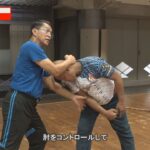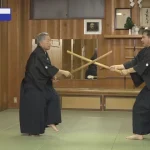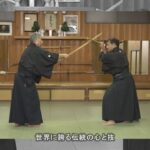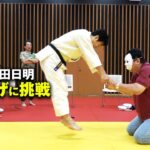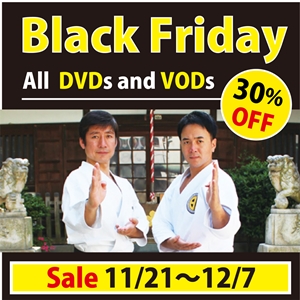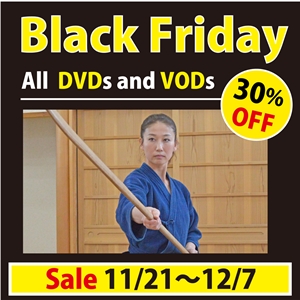Biography of André Nocquet Part 1: The first foreign uchi deshi of Ueshiba Morihei
It can be argued that what differentiates Aikido from its ancestor, Daito-ryu aiki-jujutsu, has less to do with technique than philosophy. Most notably, Aikido has universalist aspirations, which are most likely the fruit of the influence of Deguchi Onisaburo on Ueshiba Morihei. Since its establishment in 1948, the Aikikai Foundation has been extremely proactive in following through with this ideal, promoting the message and technical curriculum of Aikido through a variety of media, both domestically and abroad. This led to the incredible success of Aikido’s implantation around the world. Under Ueshiba Kisshomaru, the Hombu Dojo opened its doors to non-Japanese for the first time. In 1955, it hosted a Frenchman, Mr André Nocquet, as its first foreign uchi deshi. Obviously, Nocquet proved to be a major asset for the development of Aikido in France when he returned home after three years, but a little known fact is that he also contributed substantially to the promotion of Aikido within Japan. In this series of articles, I would like to introduce André Nocquet to the Japanese readers and to present some exclusive documents from his personal archives, of which I recently became the caretaker.
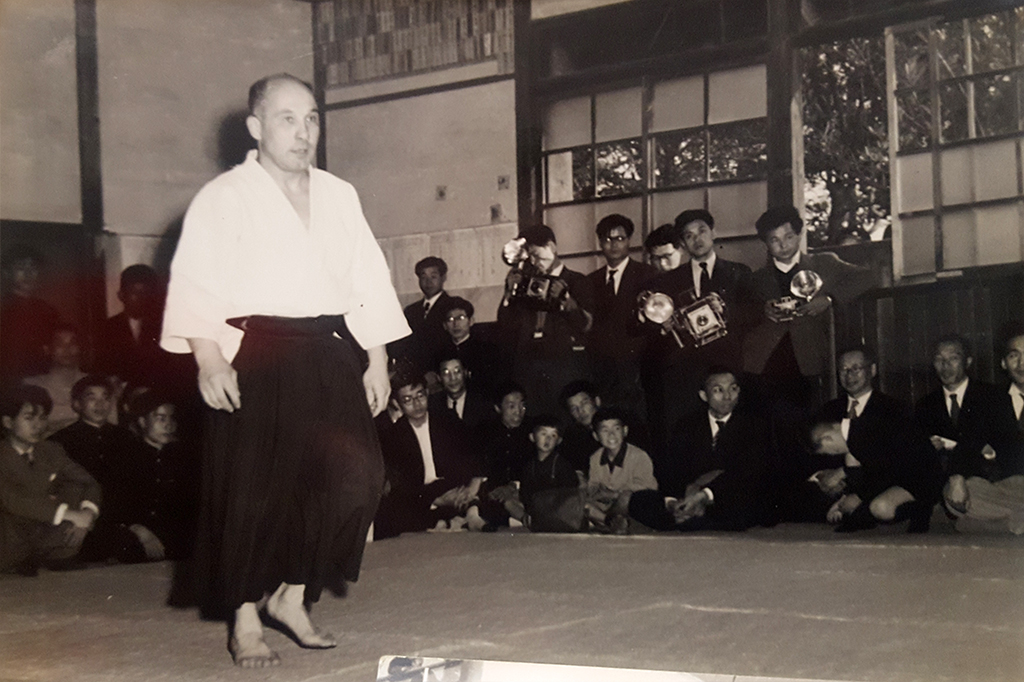
André Nocquet at the Aikikai Hombu Dojo (1956)
Youth in France and discovery of martial arts
André Nocquet was born in the West of France on July 30th, 1914 in a farmers’ family. He had a passion for physical activity and began martial arts with Greco-Roman wrestling, followed in 1929 by a little-known self defense technique called “ju-jutsu” while he attended the National School of Non-Commissioned Officers.
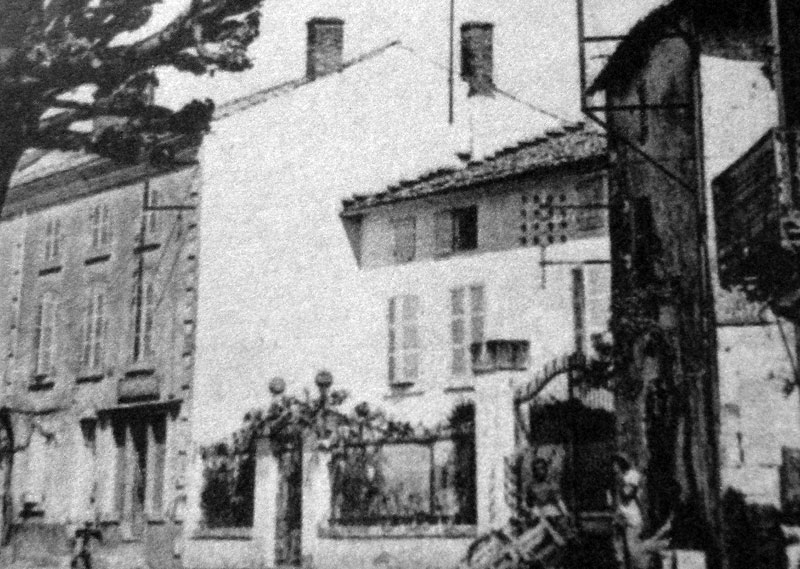
House of the Nocquet family in Prahec
After graduating from the famous Desbonnet school in Paris as a gymnastics instructor and physiotherapist, he began to make frequent trips to Paris to study Ju-jutsu under the direction of Dr. Moshé Feldenkrais, the founder of the “Jiu-jitsu Club de France” from 1937. He also became the 17th student of Judo pioneer Kawaishi Mikonosuke in 1938.
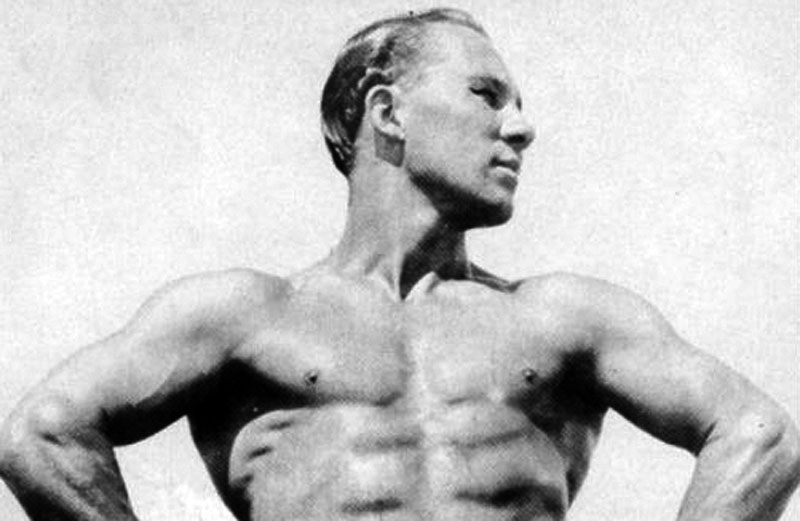
André Nocquet in his thirties
The war years
Nocquet fought during World War II in anti-aircraft artillery but he was taken prisoner at the end of the battle of Dunkirk on June 4th, 1940. He managed to escape on October 11th, 1943 and joined the French Forces of the Resistance. After the war, he received the Escapees’ Medal and the Combatant’s Cross for his bravery.
Post-war practice and discovery of Aikido
After the war, Nocquet resumed his professional activities in Angoulême. On September 12th 1945, he became Kawaishi’s 56th Judo black belt and also received a self-defense certificate from him. Nocquet created the first Judo club in his region and he also taught Judo and Ju-jutsu to the Bordeaux police.
In 1949, Kawaishi invited Mochizuki Minoru to give an Aikido demonstration, which he had studied under Ueshiba Morihei. The circularity, elegance, and refinement of Aikido techniques made a strong impression on Nocquet and he enrolled as a student of Mochizuki on the spot. He studied with great dedication until Mochizuki left France in 1952.
Demonstration performed by Kawaishi Mikonosuke, Awazu Shozo, Mochizuki Minoru, and André Nocquet during the first edition of the European Judo Championship (1951)
The charge of coordinating Aikido in continental Europe was then assigned to Abe Tadashi Sensei. His Aikido seemed even more impressive to Nocquet, albeit more violent. Abe promoted him to the rank of 1st Dan in 1954. Nocquet, now also a 4th Dan in Judo, founded clubs in the cities of Bordeaux and Biarritz and trained over 200 Judo black belts. Impressed by his enthusiasm and ability, Abe Sensei advised Nocquet to travel to Japan to learn Aikido directly from O Sensei.
This came to fruition when Nocquet was asked by the French Ministry of Cultural Affairs to travel to Japan in order to strengthen the bilateral relations established by the Franco-Japanese Cultural Agreement. Nocquet’s mission would be to study Aikido as the first foreign student to live at the home of the founder, Ueshiba Morihei, as well as Japanese physical therapy methods such as shiatsu and seitai-jutsu.
Departure for Japan
Nocquet arrived in Japan in August 1955 and was welcomed at the Ministry of Foreign Affairs by Matsuo Kuninosuke, who had lived in France for many years and now worked as the deputy editor of the Yomiuri newspaper. Nocquet did not speak any Japanese, but he had a decent command of English and was able to count on the support of His Excellency Sato Naotake from the United Nation Society, and French-speaking philosopher Tsuda Itsuo as his interpreter during his stay. Nocquet was surprised to learn that his hosts had never heard about Aikido, which was understandable since until recently, O Sensei had only taught to a small number of students from the upper classes of Japanese society.
The daily routine at the Aikikai Hombu Dojo
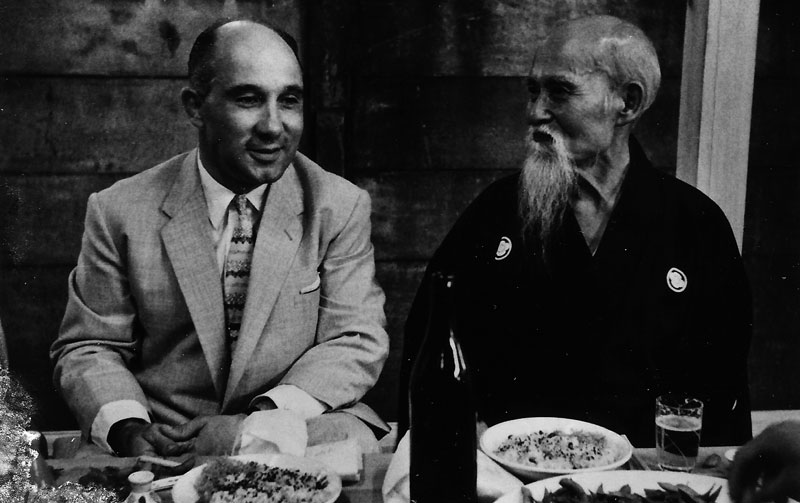
Andre Nocquet and O Sensei
André Nocquet was taken to the Hombu Dojo in Ushigome, where he would live with fellow uchi deshi Tamura Nobuyoshi and Noro Masamichi under the care of Ueshiba Kisshomaru and his wife, Sakuko. Living and training conditions were very difficult for him and he found sleeping on the floor of the small three-tatami room quite difficult. He also contracted giant urticaria in response to the unusual diet. The study of his diary suggests that he might also have felt lonely. Indeed, on top of being the only foreigner, at age 40, he was also older than most people at Hombu, including Ueshiba Kisshomaru himself.

André Nocquet with Ueshiba Sakuko (left) and Sunadomari Fukiko (right)
The uchi deshi trained every day for about 5 hours, along with 20 or so other regular students. Every day the same routine applied, Nocquet woke up at 5:00 and started cleaning the dojo for an hour. The first training started at 6:15, usually led by then Dojo-cho Ueshiba Kisshomaru, followed by a half an hour break before the second morning class. Breakfast was followed by free practice until lunch time. The dojo was usually used after lunch for free practice.

Nocquet with fellow deshi Nishiuchi and Kobayashi (right)
While Mochizuki Sensei and Abe Sensei took a very systematic and pedagogical approach to teaching, at Hombu, he was told to repeat the same movement over and over again, without explanation, until exhaustion. Isoyama Hiroshi Shihan told me that Nocquet’s techniques needed a lot of improvement but that he worked very hard under the guidance of Ueshiba Kisshomaru.
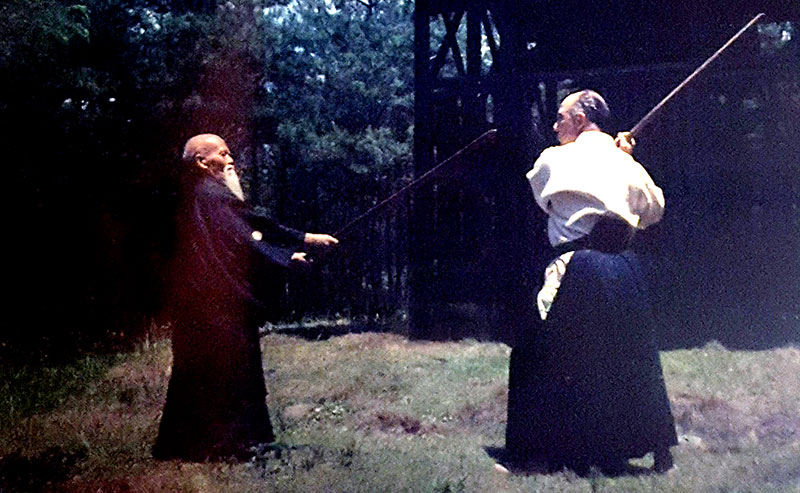
Ueshiba Morihei and Andre Nocquet in Iwama
A few other foreigners, mostly Americans, sometimes came to classes at the Hombu Dojo but none lived in the dojo. I was able to find pictures of the dojo’s nafudakake in Nocquet’s archives and it gives a good idea of the number of foreigners who were registered as black belts worldwide at the time.
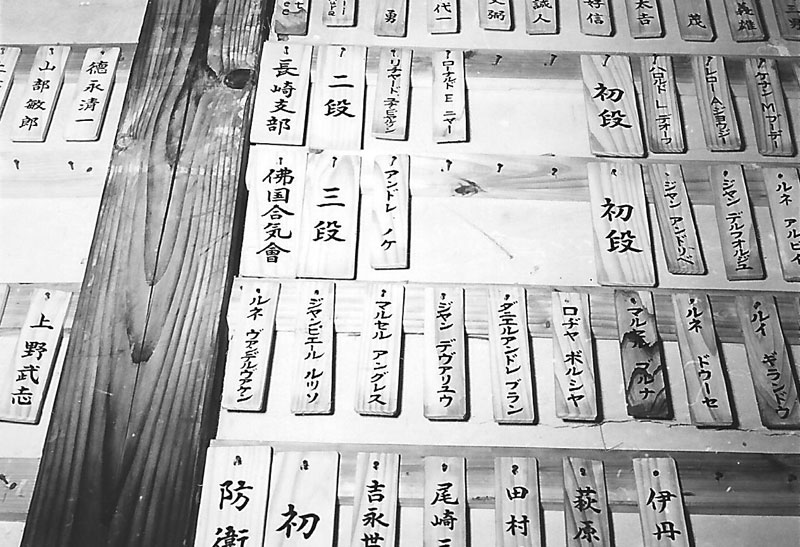
The nafudakake of the Hombu Dojo
At 4 pm, the formal training resumed under the direction of instructors such as Tohei Koichi, Okumura Shigenobu, Osawa Kisaburo or Tada Hiroshi. The class was followed by a 30 minutes pause and one more hour of practice.
André Nocquet at the Hombu Dojo
Reports on Tohei Koichi’s classes constitute the largest number of entries in Nocquet’s diary. In the absence of Tsuda, it is likely that Tohei Sensei was one of the only people at Hombu who could communicate with Nocquet, so his influence was very strong.
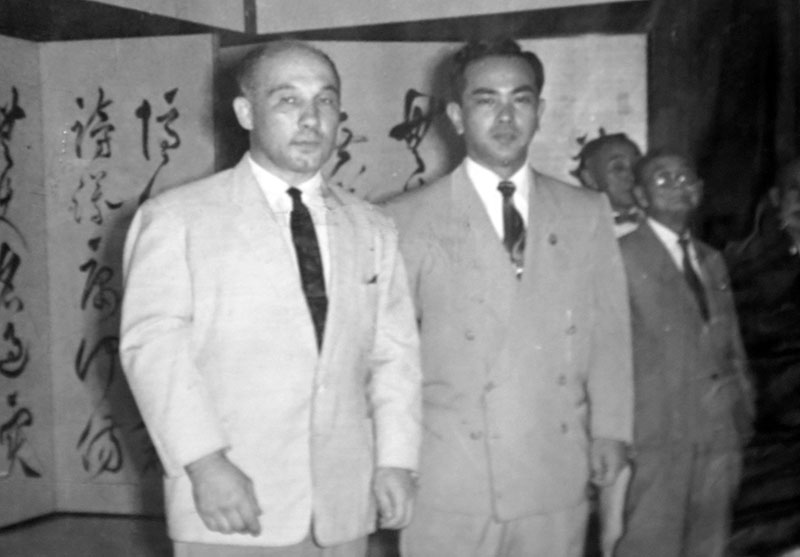
Nocquet with Tohei Koichi at the Hombu Dojo (kindly given to me by Kobayashi Yasuo Shihan)
According to Okumura Shigenobu, the arrival of Nocquet marked a media upturn in the dojo by domestic and international journalists. Nocquet wrote several articles about Judo and Aikido in Japanese newspapers.
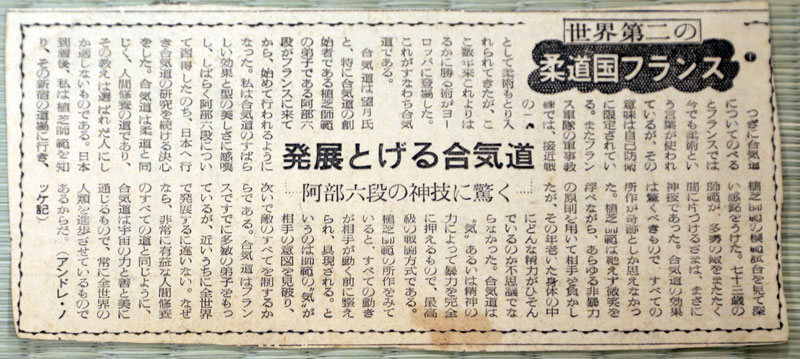
Article written by André Nocquet for the Yomiuri Shinbun (kindly given to me by Tada Hiroshi Shihan)
Nocquet’s contacts in the foreign political institutions were also put to use to help set up official events to introduce Aikido to the foreign dignitaries present in Japan. On September 28 1955, he gave his first conference on the spiritual aspects of Aikido to cultural representatives of several embassies at the Hombu Dojo. The Department of Culture and Information of the French Embassy subsequently sponsored an event that took place at the Hombu Dojo on September 25, 1956 in the presence of the press and representatives of foreign embassies. During this event, O Sensei gave a lecture on the spiritual ideals of Aikido, followed by a demonstration, to which Nocquet took part. The event was a great success and its reach went well beyond Japan.
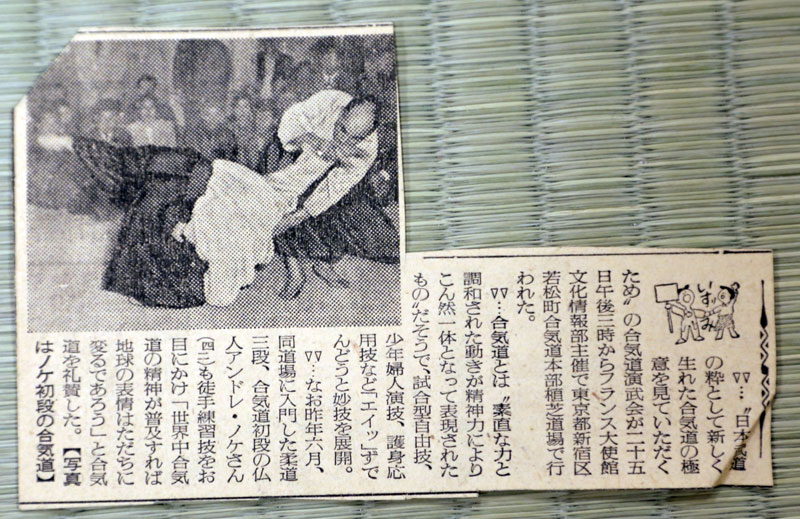
Yomiuri newspaper article about André Nocquet (kindly given to me by Tada Hiroshi Shihan)
Nocquet spoke a number of times to foreign journalists and politicians, including a speech that he gave on Remembrance Day on the 11th of November 1956, which is transcribed in his diary. Nocquet was already in Japan when the first public Aikido demonstration took place on the roof of the Takashimaya Department Store in September 1955, but the extent of his involvement is uncertain. He did take part in a subsequent demonstration that was organised by the Yomiuri newspaper on the roof of the Toyoko department store in Shibuya.
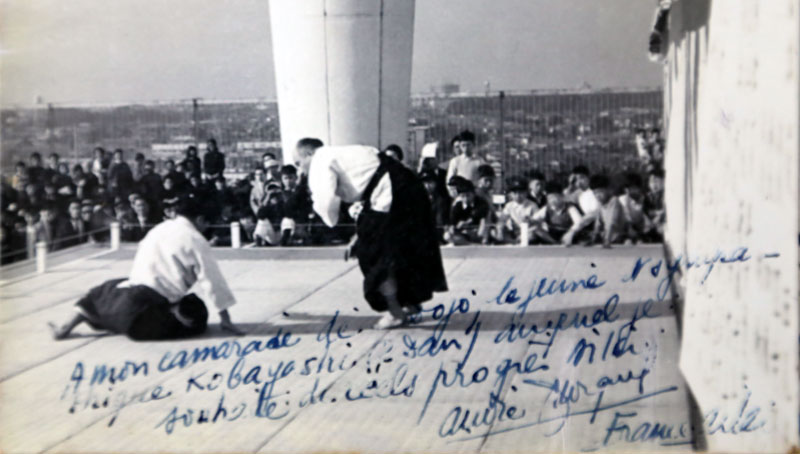
Demonstration on the roof of the Toyoko department store in Shibuya. The photo is dedicated by Nocquet to Kobayashi Yasuo. (photo kindly given to me by Kobayashi Yasuo Shihan)
In an entry in his personal journal dated from November 20th, 1956, Nocquet lays out the plans for a promotional film. This was to be shot on a sunny Spring Sunday in the garden of the Hotel Chinzanso Tokyo using color cinema-scope 16mm film. He describes shots of O Sensei and sequences of group practice, as well as a more dream-like sequence inspired by zen.
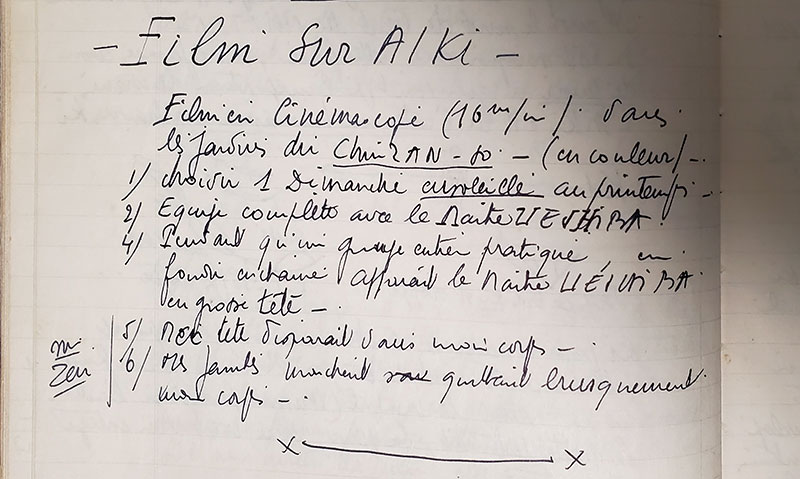
Excerpt from Nocquet’s journal describing the film project
I found some excerpts that fit this description in Nocquet’s black and white 8 mm film archives. I showed them to Tada Hiroshi Shihan, who confirmed to me that they were shot in Chinzanso. This would place the shooting in Spring 1957 but it is unclear whether the project ever got finished and released.
Some excerpts from the video shot at Chinzanso
Other martial experiences and official recognition
In his spare time, Nocquet studied self-defense with Tomiki Kenji Sensei. He was also taken to the Tempukai by Tohei Koichi on several occasions to train under Nakamura Tempu. In his journal, Nocquet also mentions training in Kempo under someone named Savoy. Browsing in Nocquet’s archives, I found pictures of him training under the direction of Takimoto Tekko, the founder of Takimoto-ha Fusen-ryu jujutsu.
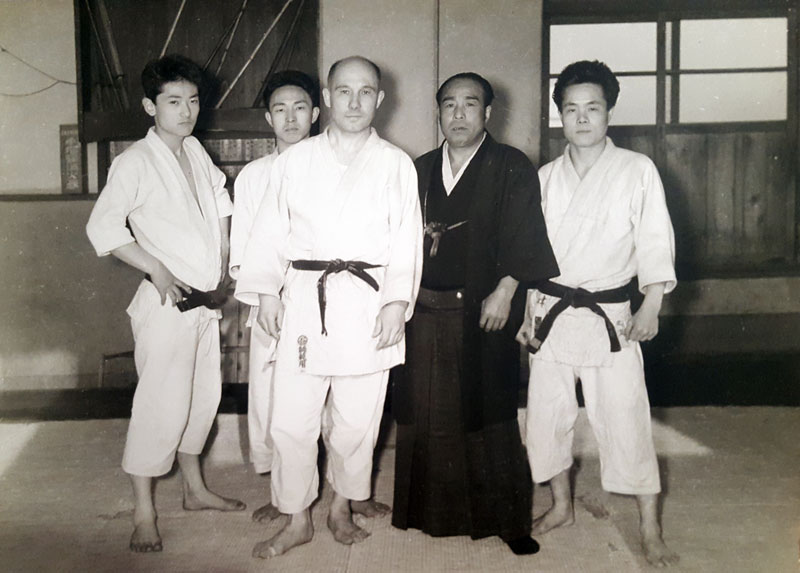
André Nocquet with Takimoto Tekko and his students
Nocquet also used to say that even though he had begun studying Kyokushin Karate with Oyama Masutatsu Sensei, including some ascetic training in the mountains, he was soon reminded by O Sensei that he had come to focus on Aikido, and therefore he stopped it.
Nocquet, whose mission was also to study traditional Japanese healing, participated in at least one intensive Shiatsu seminar in Tokyo in winter 1955 with Namikoshi Tokujiro, the president of the International School of Shiatsu, who awarded him certificates of beginner and intermediate levels. He also studied with Nishi Katsuzo, the founder of the Nishi Health System, who was also an instructor at the Aikikai Hombu Dojo and whose kingyo undo is still widely practiced during Aikido warm-ups.
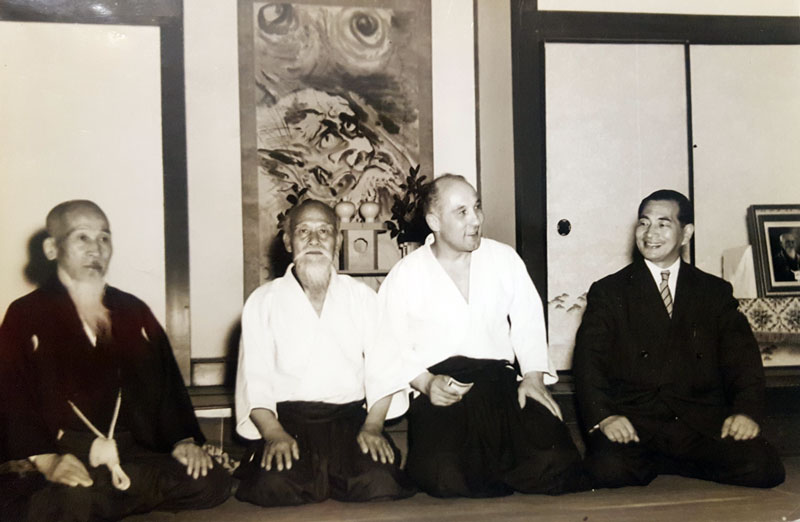
André Nocquet at the Hombu Dojo with Ueshiba Morihei and Namikoshi Tokujiro (right)
In 1957, before his return to France, Nocquet was awarded the title of Shidoin by Ueshiba Kisshomaru and he also received a diploma in self-defense from Tomiki Kenji.
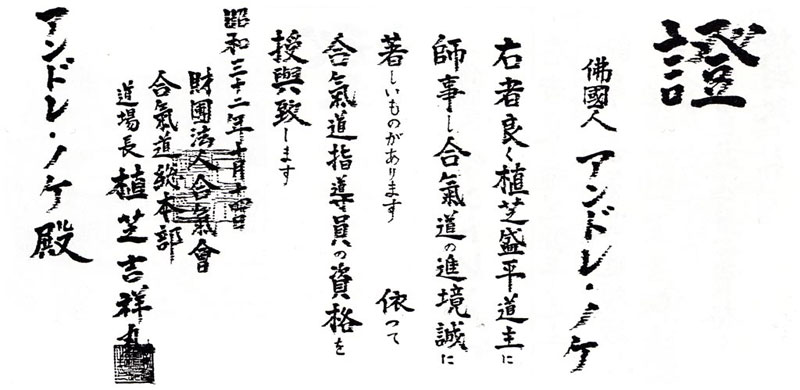
Nocquet’s Shidoin certificate
Departure from Japan and return to France
Nocquet left the port of Yokohama in October 1957. He stopped in the United States of America and taught Aikido to the Fresno Police Department and subsequently received a Diploma from the National Exchange Club of the United States on February 11th, 1958. Nocquet’s student Mr Robert Cornman contacted the Fresno Police Department on my behalf but unfortunately, no evidence remains of Nocquet’s time there so the circumstances under which he taught there. Nocquet eventually returned to France during the summer of 1958.
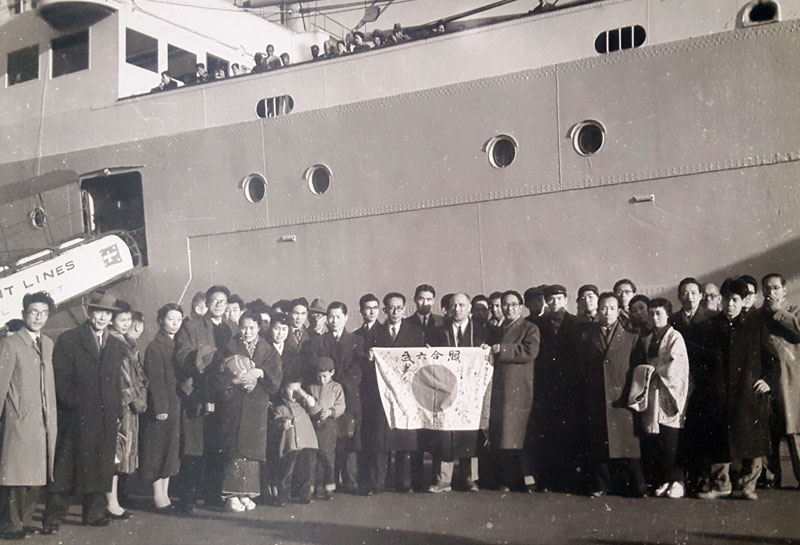
Nocquet’s departure from Japan from the port of Yokohama
He was asked to write an extensive report for the Ministry of Education putting in parallel what he had learned in Japan with traditional European martial techniques developed since the 15th century but unfortunately, I could not find any trace of this report.
Promotion of Aikido in Europe
Nocquet was promoted to 4th Dan by Abe Tadashi on December 10th, 1959. On May 20th 1960, before Abe left France, he appointed Nocquet as his successor in his functions for the development of Aikido in Europe.
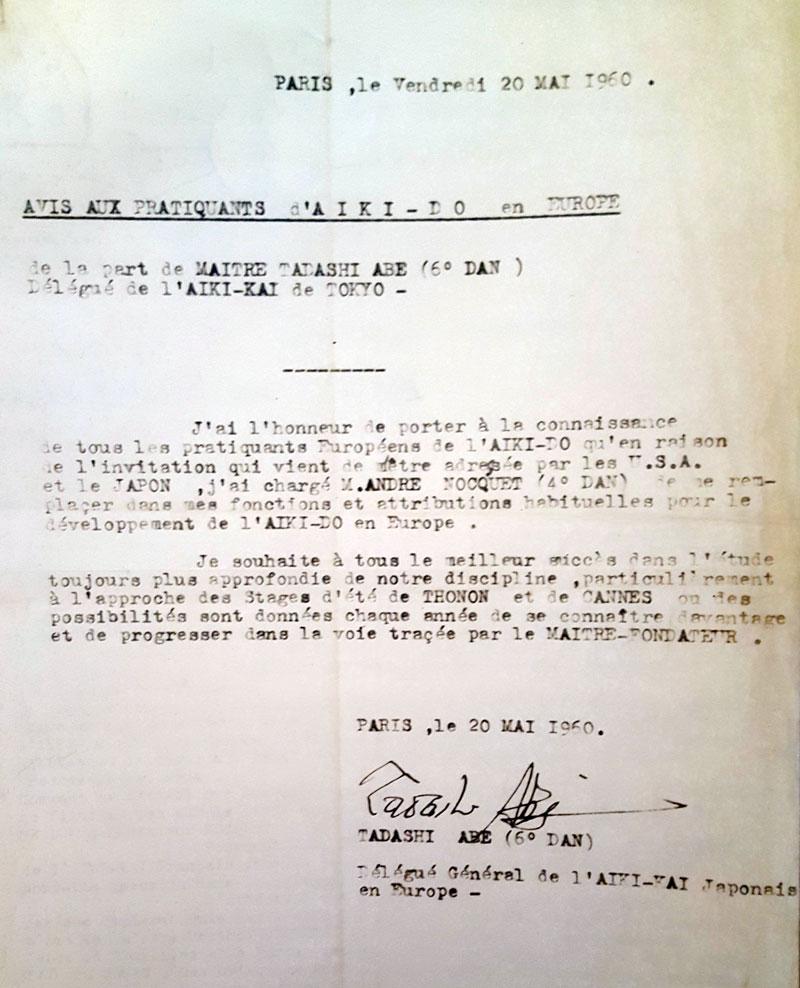
Letter by Abe Tadashi, dated 20th May 1960, introducing Nocquet as his successor in charge of Aikido in Europe
Later, Nocquet was asked by Ueshiba Kisshomaru to welcome the arrival in France his training partners Noro Masamichi and Nakazono Mutsuro in 1961, and Tamura Nobuyoshi in 1964. Unfortunately, the presence of several high-level instructors exacerbated tensions within an already heterogeneous community of Aikidoka, which led to divisions that still exist today.
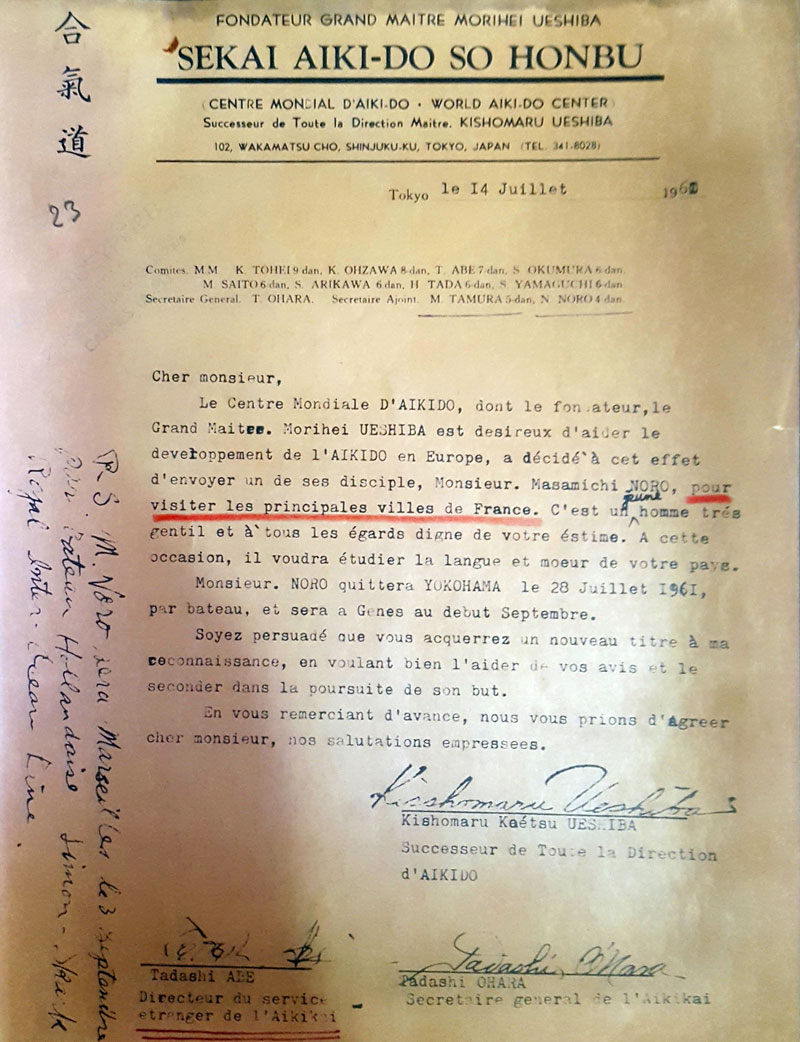
Letter from Ueshiba Kisshomaru to Nocquet, dated 14 July 1961, informing him of the arrival of Noro Masamichi to Europe
Nocquet taught most of the current senior Aikido through seminars, demonstrations and lectures throughout Europe. He also taught soldiers from the National Paratrooper Union and officers from the National Police. He partnered with Mochizuki Hiroo (the son of Mochizuki Minoru) and Nobuyoshi Tamura in 1973 on the formalization of an Aikido curriculum, which is still in place today. He also helped establish a state-recognized diploma of Aikido instructor. He sets up the European Union of Aikido in 1975.
From 1975, Nocquet began writing his first book on Aikido, followed by two others. Nocquet gave the proceeds from his later book “Zen Et Aiki Ne Font Qu’Un” to the relief efforts for the victims of the 1995 Great Hanshin earthquake. He gave a number of TV and radio interviews to promote Aikido.
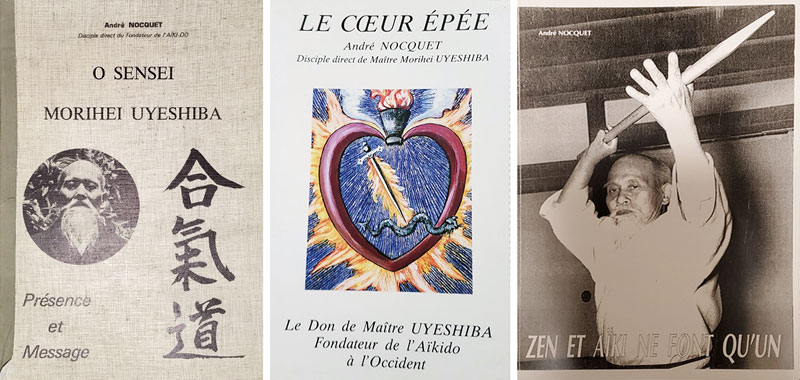
André Nocquet’s books
Nocquet received the title of Knight of the National Order of Merit on July 10, 1982 and was made a Knight of the Legion of Honor April 2, 1994. He was promoted by his federation to the 8th Dan Aikido in 1985 and returned to Japan in 1990 for the first time in 33 years to present Aikido Doshu Ueshiba Kisshomaru with a gold medal from the French Ministry of Sports.
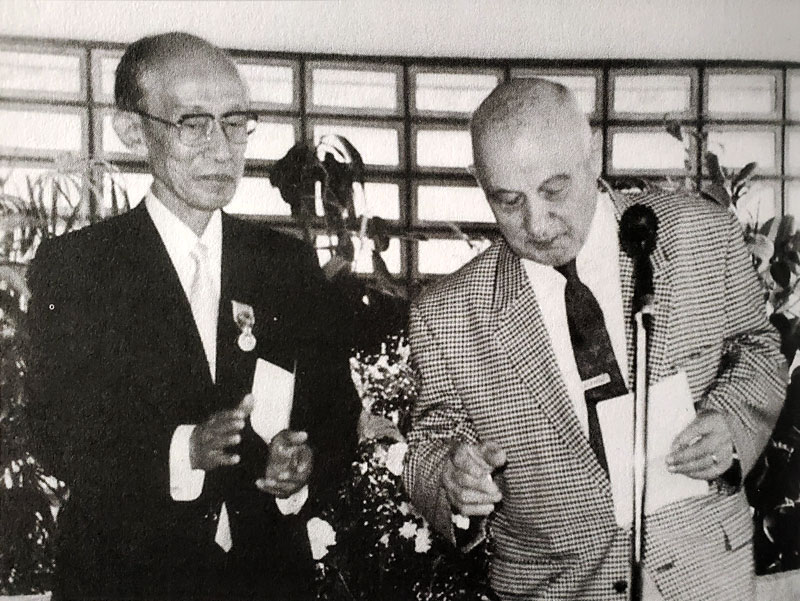
André Nocquet with Ueshiba Kisshomaru at the French Embassy in Tokyo
André Nocquet passed away on March 12, 1999 at the age of 84 and he was buried in Prahecq, his hometown.
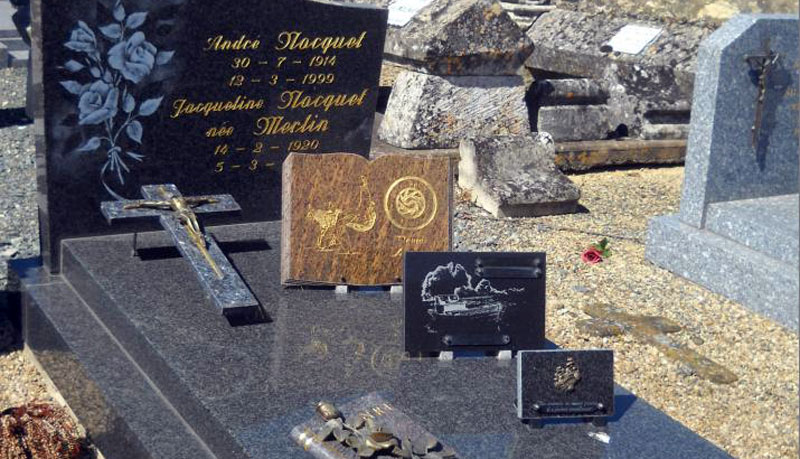
Nocquet’s grave in Prahec
In the next article, I will describe some of the documents from Nocquet Sensei’s archives that were placed under my care. I would like to dedicate this article to the memory of Mr Frank de Craene. Frank was a very close student of Nocquet and the caretaker of his archives. Some time before his passing, he entrusted me with the task of continuing his work with analyzing these materials and bringing them to the world. I hope to be worthy of his trust. May he rest in peace.
About the author
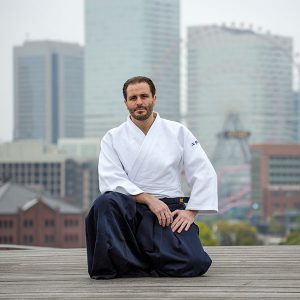
Guillaume Erard
Guillaume Erard is an author and educator, permanent resident of Japan. He has been training for over ten years at the Aikikai Headquarters in Tokyo, where he received the 6th Dan from Aikido Doshu Moriteru Ueshiba. He studied with some of the world’s leading Aikido instructors, including several direct students of O Sensei, and has produced a number of well regarded video interviews with them. Guillaume now heads the Yokohama AikiDojo and he regularly travels back to Europe to give lectures and seminars. Guillaume also holds the title of 5th Dan in Daito-ryu aiki-jujutsu and serves as Deputy Secretary for International Affairs of the Shikoku Headquarters. He is passionate about science and education, and he holds a PhD in Molecular Biology. Guillaume’s work can be accessed through his website and on his YouTube channel.






